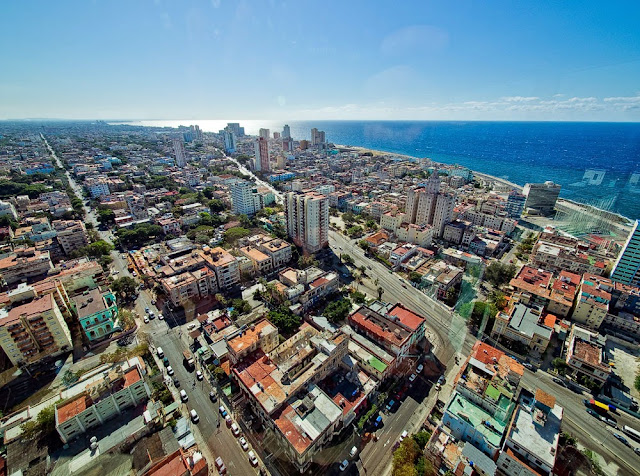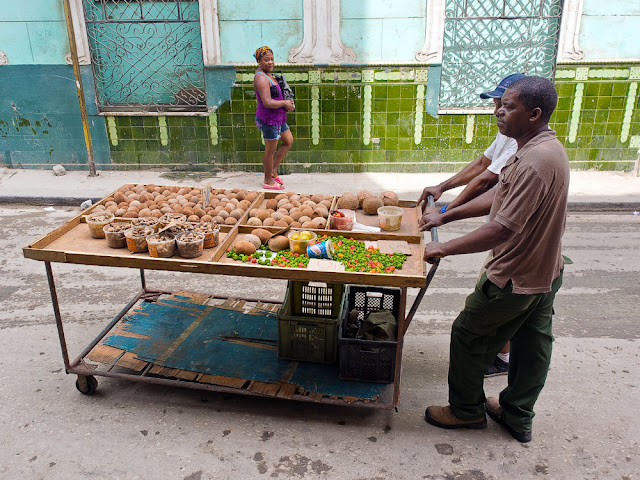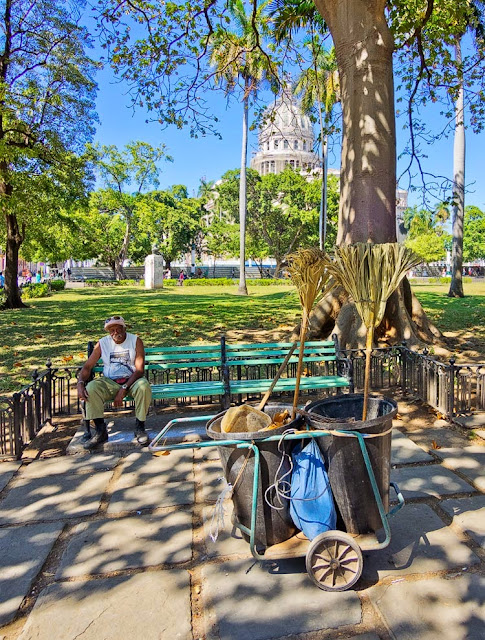 |
| El Cristo de la Habana |
We take the ferry across the bay to El Cristo de la Habana with Alexis Cardenas. Bright, articulate and passionate about the city of his birth, we have asked him to show us around for a day.
Before we board, the guards at the ferry terminal check our bags. They linger over the roll of soft white toilet paper inside mine, squashed after walking the streets of Havana for three weeks. It's not what they're looking for, but they're curious, distrustful even.
As the boat grumbles across the brown water, Alexis explains the security. There was an attempt, he says, to hijack the ferry at knifepoint and 'escape' to Miami. It was packed with ordinary people; families with children.
'They didn't want to go to Miami that day,' Alexis says. Then his face breaks into a wry smile, 'well not like that.'
I don't ask what happened to the would-be hijackers, but later I read of yet another hijack attempt with a weapon smuggled on board in a cake. The penalty that time was execution.
But today is not the day for such stories. Optimism is in the air and this morning Alexis is full of it, qualified, cautious optimism, of course, because this is Cuba, but the future has perhaps never looked brighter. He is starting the business he has been dreaming about for so long: a bespoke tour guide company called 'Meet My Havana'. We are his first customers.
As a Caribbean breeze blows across the ferry deck, I imagine it is carrying change upon it. That's how it feels, that's what everyone's talking about: the changes that are coming to Cuba. Even as we dock at the Casablanca side of the bay and climb up the hill to reach Christ, bureaucrats are busy working on the reinstatement of ferry links between Florida and Cuba. One day, with luck and a fair wind, those guards will be looking for new jobs.
The Cristo, sculpted by the Cuban Jilma Madera from Italian carrara marble, gazes back across the bay towards Old Havana and the port. The crown of his head has been blasted off by lightning and lies in the grass at his sandalled feet. It is said this happened on the very day Fidel Castro entered Havana during the Cuban Revolution. The storyteller in me smells an irresistible myth.
 |
| El Cristo watches over Havana Bay |
It is Cristo's view of Havana Bay that we have come to share. He has been looking at it since just before the Revolution. What changes he has witnessed and is yet to behold, this omniscient viewer, although technically he has no eyes to see: the sockets are empty.
Our day continues. We walk and talk our way around Old Havana. Alexis tells me about the Cuban Santeria religion. We attend the rehearsal of a community orchestra because he knows we are musicians. We eat ice cream at Coppellia because, well, he knows we like ice cream and Coppellia is a Cuban institution that we have not yet had time to visit. He even takes us to the market where he bought his satchel so that I can buy one just like it!
 |
| Havana from the top of the FOCSA building |
Our final view of the day is better even than Cristo's. We take a lift to the cafe restaurant at the top of the FOCSA building, the tallest in the city, to find the whole of Havana spread at our feet. We are higher even than the turkey vultures circling the Habana Libre hotel. It is breathtaking, if a little dizzying!
As we ride back to Parque Centrale in a 'shared' taxi that Alexis has hailed for us, I reflect on the day as the sun-strafed streets pass beyond the open windows. What have I enjoyed most? I realise it is not one thing in particular. Rather, it is Havana as a whole seen through a different pair of eyes, those of a young Cuban, looking hopefully towards a brighter future. That is what will stay with me.
Information
Find details for Alexis Cardenas's 'Meet my Havana' bespoke tour guide service at:
www.facebook.com/meetmyhavana
The ferry terminal is on Avenida del Puerto, opposite the Our Lady of Kazan Russian Orthodox Church (Catedral Ortodoxo Nuestra Senora de Kazan). Ferries run frequently to Casablanca and Regla.






























